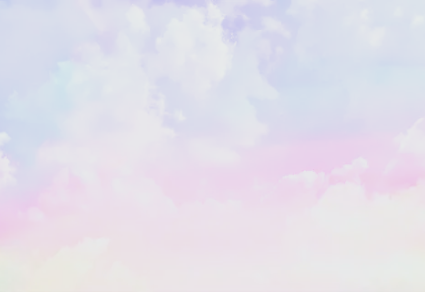So I'm Doing A Portfolio Website, And Currently The Majority Of My Pages Are Made Up Of The Following Colours, White, D3d8d3 And 252525. It's So So Monotone And Bland And Boring. The Blog Part Has A Spice Of Colour With Decb91, 30462f And 98c1c0. Can You Recommend Me A Better, More Cohesive Colour Scheme. I'm Very Creative And I Want My Website To Reflect That
so I'm doing a portfolio website, and currently the majority of my pages are made up of the following colours, white, d3d8d3 and 252525. It's so so monotone and bland and boring. The blog part has a spice of colour with decb91, 30462f and 98c1c0. Can you recommend me a better, more cohesive colour scheme. I'm very creative and I want my website to reflect that
About This Color Palette
Absolutely! Here’s a breakdown of how you can effectively use each color in your website design to create a cohesive and visually appealing layout:
-
Bright White ( #FFFFFF ): Use this as the primary background color for most of your pages. It creates a clean, spacious feel and helps other colors pop.
-
Soft Mint ( #D3E8D3 ): This can be used for secondary backgrounds, such as sections or cards. It adds a subtle color that is refreshing and complements the white background.
-
Charcoal Black ( #252525 ): Use this for text and headings to ensure readability. It provides a strong contrast against the lighter backgrounds and adds a modern touch.
-
Golden Yellow ( #DECB91 ): This color can be used for call-to-action buttons, highlights, or accents. It draws attention and adds warmth to your design.
-
Forest Green ( #30462F ): Great for links, hover effects, or as a background for your blog section. It gives a natural feel and works well with the other colors.
-
Teal Blue ( #98C1C0 ): Use this for elements like borders, icons, or secondary buttons. It can also work well as a background color for specific content areas or sections.
-
Vibrant Coral ( #FF6F61 ): This should be used sparingly for key highlights or important notifications. It adds energy and vibrancy to your design.
-
Lavender Mist ( #E6E6FA ): This soft color can be used for form backgrounds, input fields, or subtle overlays. It helps maintain a light and airy feel.
-
Sky Blue ( #87CEEB ): Consider using this for background elements, such as headers or footers, or even as a background for testimonials or featured projects.
-
Warm Gray ( #A39C9C ): This can be used for text in less prominent areas, such as footers or disclaimers, and as a background for cards or sections that need to recede visually.
Implementation Tips:
- Hierarchy: Use the more vibrant colors for elements that require attention (like calls to action) and the softer tones for backgrounds and supporting text.
- Contrast: Ensure that text is always readable against the background colors by maintaining high contrast (e.g., dark text on light backgrounds and vice versa).
- Consistency: Pick a few of these colors as your primary palette and use the others for accents to avoid overwhelming users with too many colors at once.
Do you have specific sections in mind where you want to apply these colors, or would you like help with a layout design?
Overview
Welcome back, here's what's happening today.
Revenue Growth
Build something amazing
Create stunning designs with our AI-powered color palette generator. Perfect for web, mobile, and print.
Fast Performance
Optimized for speed and efficiency.
Secure by Default
Enterprise-grade security built-in.
Easy to Use
Intuitive interface for everyone.
Good Morning
Here's your daily update
Today
Logo Variations
Business Card
John Doe
Creative Director
john.doe@brandname.com
+1 (555) 123-4567
www.brandname.com
Type Scale
Heading 1
Bold / 48pxHeading 2
Bold / 36pxHeading 3
Bold / 30pxHeading 4
Bold / 24pxBody text. Lorem ipsum dolor sit amet, consectetur adipiscing elit. Sed do eiusmod tempor incididunt ut labore et dolore magna aliqua.
Regular / 16pxArticle Layout
The Future of Color
Color trends are evolving rapidly. We are seeing a shift towards more vibrant, expressive palettes that capture attention and evoke emotion.
"Color is a power which directly influences the soul."
Why it matters
Choosing the right color palette is crucial for brand identity. It communicates values without words and creates an instant connection with the audience.
Abstract
Composition #01
Simulate how your palette appears to users with different types of color vision deficiencies. Approximately 8% of men and 0.5% of women have some form of color blindness.
Original Palette
Protanopia
Red-blind (approx. 1% of men)
Deuteranopia
Green-blind (approx. 1% of men)
Tritanopia
Blue-blind (very rare)
Achromatopsia
Total color blindness (monochromacy)
White
#FFFFFF
Nero
#252525
Pastel Red
#FF6F61
Foundation White
#E6E6FA
Below Zero
#87CEEB
Palm Leaf
#30462F
Pastel Turquoise
#98C1C0
Silky Mint
#D3E8D3
Desert Temple
#DECB91
Walkway
#A39C9C
Color Wheel Distribution
Harmony Analysis
Dominant Temperature
--
Harmony Type
--
Analyzing color relationships...
Color Values (HSL)
Select Background
Select Text Color
Contrast Analysis
Aa
The quick brown fox jumps over the lazy dog.
Normal Text
Large Text
Understanding WCAG Scores
Normal Text
- AA requires 4.5:1 ratio
- AAA requires 7.0:1 ratio
Large Text (18pt+ or 14pt+ bold)
- AA requires 3.0:1 ratio
- AAA requires 4.5:1 ratio
